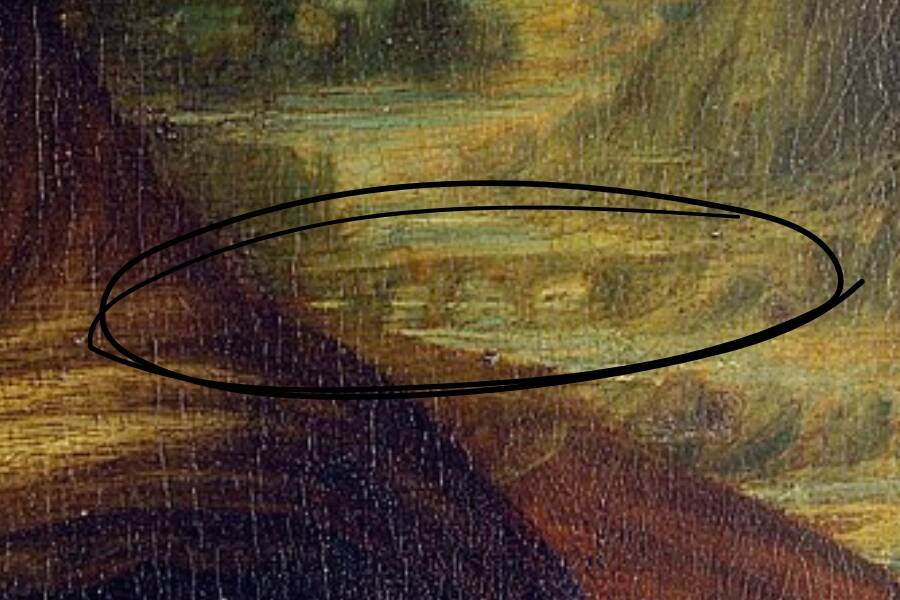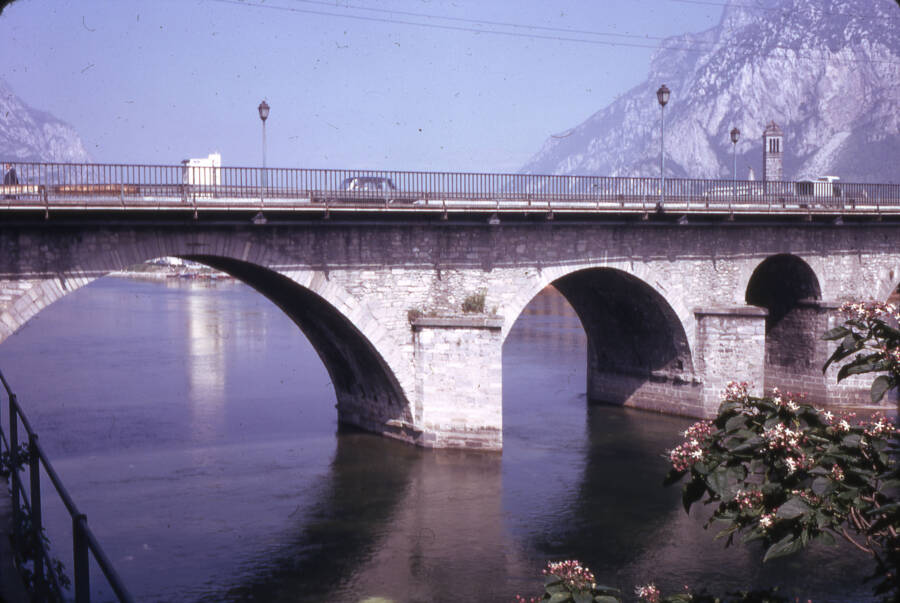Geologist and art historian Ann Pizzorusso believes that the background of the Mona Lisa depicts Lecco, a small town in the Lombardy region of Italy.

Leonardo da VinciThe small Italian town of Lecco, in the Lombardy region, may be the real-life setting depicted in the background of the Mona Lisa, if new research is correct.
Leonardo da Vinci’s Mona Lisa is perhaps the world’s most famous painting. It’s also one of the world’s most mysterious. For centuries, art historians have analyzed the Mona Lisa, hoping to discern whether the woman in the painting was meant to be smiling, what da Vinci’s original sketches for the painting looked like, and the location that the painting’s background depicts.
In 2023, historian Silvano Vinceti claimed to have identified a bridge that appears in the background of the Mona Lisa as the Romito di Laterina bridge in Italy’s Arezzo province.
Vinceti’s study didn’t mark the end of this tale, however. In fact, a new study from geologist and art historian Ann Pizzorusso argues that the background of the Mona Lisa does not depict Arezzo at all, but instead a small town in Italy’s Lombardy region, roughly 250 miles north.
Where Is The Real-Life Location Depicted In The Background Of The Mona Lisa?
Ann Pizzorusso has conducted a unique analysis which has led her to the conclusion that the background of the Mona Lisa depicts the Italian town of Lecco.
Speaking with Reuters, Pizzorusso claims: “When I came to Lecco, I realized he had painted the Mona Lisa here, and I did a lot of research on the rock formations. And that’s how this discovery came about.”
Like Arezzo, Lecco also has a bridge that could be linked to the one painted in the Mona Lisa, but for Pizzorusso, it’s the least important part of the image. Instead, the geologist focused on what she knew best: rocks.
“The bridge to me was not the important aspect of painting,” Pizzorusso said. “In the other hypotheses the geology was just incorrect.”

Public DomainThe arched bridge depicted in the Mona Lisa has been the subject of countless studies, despite the general shape being fairly common throughout Italy.
Notably, Pizzorusso pointed out, the rock formations found in Lecco were limestone, which seemingly match the rock formations that da Vinci painted behind the Mona Lisa’s subject, based on their gray-white color. Moreover, the Mona Lisa seems to depict a portion of the Adda River, with a lake behind it, which Pizzorusso said “are perfectly shown underneath these sawtooth mountains.”
In addition to being a geologist, Pizzorusso took a deep interest in the Italian Renaissance, later earning her master’s in the subject. Like Leonardo da Vinci himself, her analysis of his masterpiece combines the fields of science and art — and for many other scholars, this overlap is a more compelling argument than others that have been put forth. Simply put, no one else has looked at the geology in the way Pizzorusso has.

Wikimedia CommonsThe 14th-century Azzone Visconti bridge in Lecco, Italy, which also has a similar structure to the one found in the Mona Lisa.
“The arched bridge was ubiquitous throughout Italy and Europe and many looked very similar. It is impossible to identify an exact location from a bridge alone. They all talk about the bridge and nobody talks about the geology,” Pizzorusso told The Guardian.
“Geologists don’t look at paintings, and art historians don’t look at geology. Art historians said Leonardo always used his imagination, but you can give this picture to any geologist in the world and they’ll say what I’m saying about Lecco.”
Why Not Everyone Is Convinced That The Mona Lisa’s Background Depicts Lecco
Director of ArtWatch UK Michael Daley, for one, expressed great enthusiasm about Pizzorusso’s analysis, stating, “Because she has bona fide scientific knowledge, when she notices things in Leonardo — the most scientific artist ever — they’re momentous.”
Pizzorusso likewise noted that da Vinci often told his students that it was important to depict nature accurately, and his notebooks reveal that he spent a good amount of time in Lecco and other northern territories. Both of these facts would add further credibility to Pizzorusso’s claim — and her own scientific background makes the case even more compelling.
“I have analyzed every painting in which he has had a rock in it, and it’s perfect,” Pizzorusso told CBC radio. “It’s like looking at a photograph.”

Ann PizzorussoAnn Pizzorusso, the geologist and art historian who may have identified the background location of the Mona Lisa.
“Art historians all speculate on where the Mona Lisa was painted,” Daley said. “Anybody who sees a bridge thinks it was there. But Pizzorusso has compellingly pinned down the location with proof of Leonardo’s presence in the area, its geology, and, of course, a bridge.”
Others who have studied Leonardo da Vinci’s famous work, however, aren’t quite as enthusiastic as Daley. For one, there’s British art historian Martin Kemp, one of the world’s leading da Vinci scholars, who told CBC radio, “the impulse to find a real place that Leonardo is portraying in the Mona Lisa and other of his paintings is pretty insatiable,” but ultimately a misguided effort.
Kemp does not believe that da Vinci was painting real places as he saw them, rather that he was “looking at real things with incredible intensity, but he then remakes them in painting. Why he should put a landscape of Albinor or a landscape of Arezzo or landscape of wherever is completely unclear.”
Kemp said da Vinci put into his works a “poetic truth” and a “scientific truth,” but that ultimately, there is no reason to think he would have created a painting of the world exactly as he saw it in front of him.
University of Virginia art history professor Francesca Fiorani echoed Kemp’s sentiment in an interview with The Art Newspaper, noting that Leonardo da Vinci studied nature “with great attention and an incredibly keen eye, and that knowledge informs his art, but the landscapes of his painting… are his personal imaginary rendition of nature, not copies of actual landscapes.”
Fiorani further stated that “to claim otherwise means not understanding how Leonardo’s mind worked and how he painted.”

North Wind Picture Archives/AlamyPortrait of the artist and scientist Leonardo da Vinci.
Of course, no one other than da Vinci himself could truly claim to know exactly how his mind worked — and perhaps, not even he could fully have explained it.
And not all da Vinci scholars were quite as pessimistic. Art historian Jacques Franck, a former consultant for the Louvre on Leonardo da Vinci, said that he did not “doubt for one second that Pizzorusso is right in her theory, given her perfect knowledge of the geology of the Italian country — and more precisely of the places where Leonardo traveled in his lifetime.”
Given that Leonardo da Vinci never wrote down where he painted the Mona Lisa, it may be impossible to ever say, without a doubt, what his intention was. However, Pizzorusso’s unique qualifications certainly make a compelling case for Lecco — and at least some da Vinci scholars agree.
After reading about the possible identification of the Mona Lisa’s background, learn about how Vincenzo Peruggia once stole the painting — and turned it into a masterpiece. Then, read about Italian Renaissance artist Artemisia Gentileschi.





